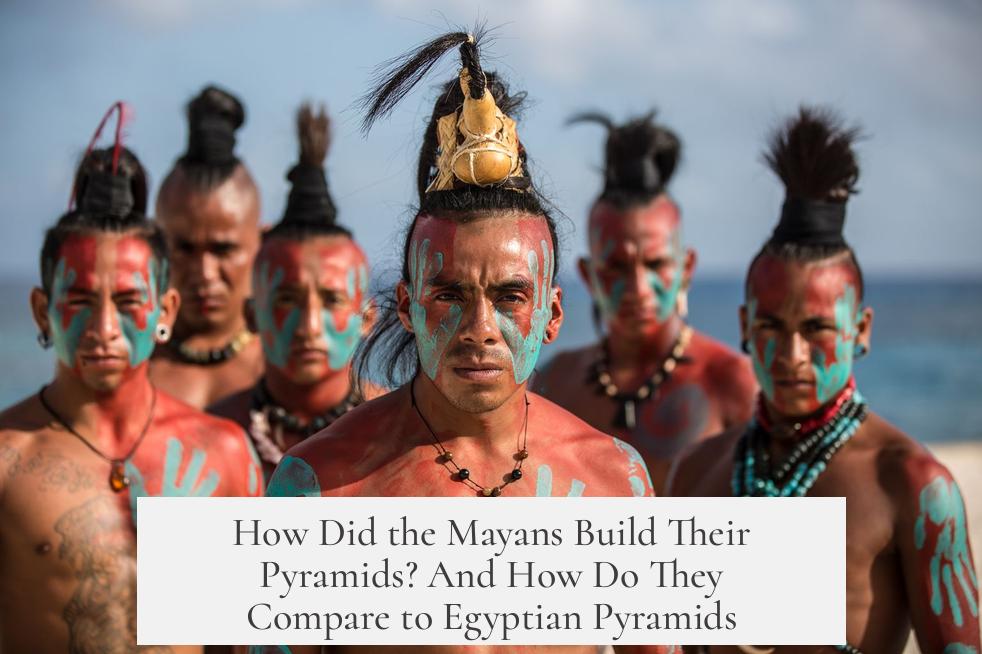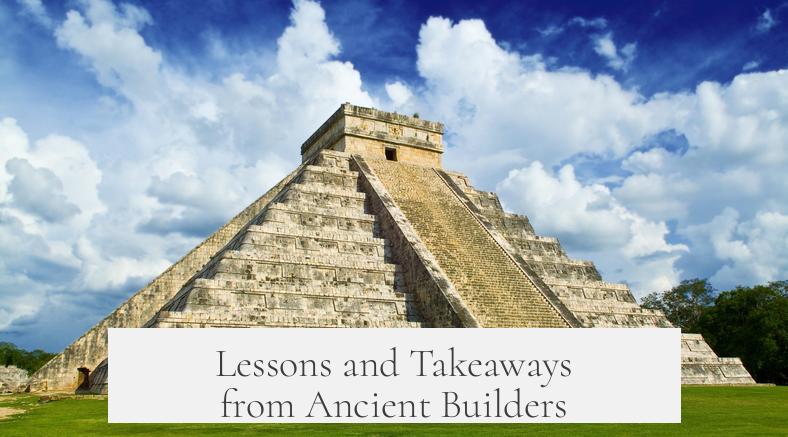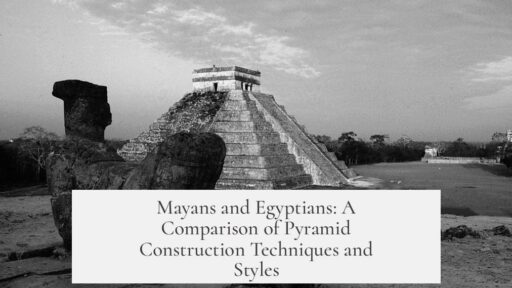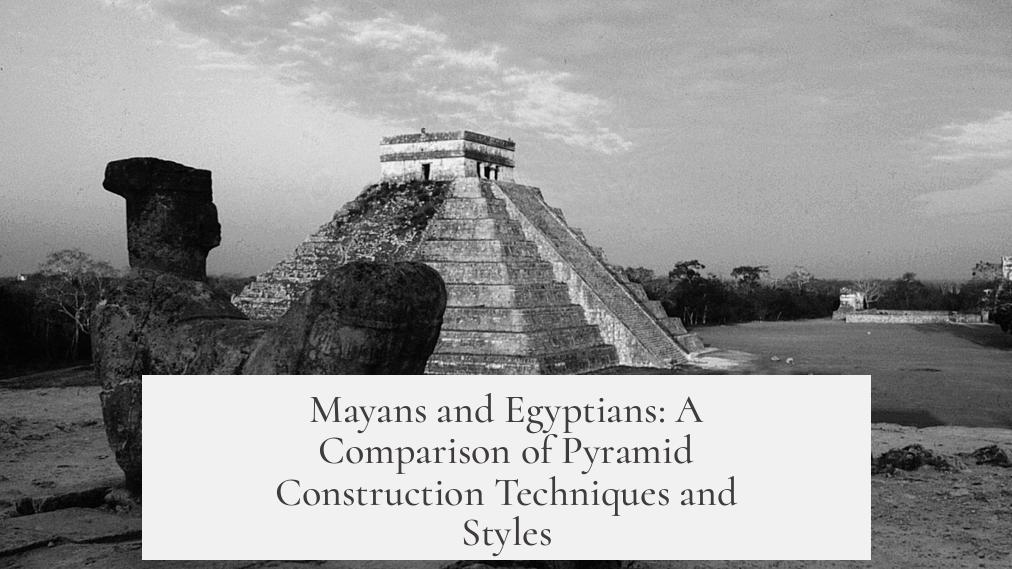The Mayans built their pyramids using locally quarried limestone or basalt. They extracted large stone blocks with harder stone tools. These blocks were roughly shaped at the quarry and transported to the construction site, where workers finely shaped and manually stacked them. Transportation involved rolling heavy stones on logs, rafting them down rivers, or simply carrying smaller blocks by hand.
Mayans developed specific architectural styles. The Classic Period Maya favored “apron molding,” which involves decorative molding along the pyramid edges. Other Mesoamerican cultures varied: the Aztecs crafted twin-peaked pyramids with two shrines dedicated to Huitzilopochtli and Tlaloc. The Tarascans built keyhole-shaped pyramids called “yacatas.” Teotihuacan used the talud-tablero style, which means sloped walls (talud) supporting flat panels (tablero) often painted with frescoes.
Many Mayan pyramids were multi-layered, built atop previous structures to form taller pyramids. The visible bare stone we see today is the core structure. Originally, pyramids were covered with stucco and painted, often featuring shrines on top with altars. These spaces served living rituals, sacrifices, and offerings, unlike Egyptian pyramids primarily designed as tombs for pharaohs.
| Comparison Aspect | Mayan (Mesoamerican) Pyramids | Egyptian Pyramids |
|---|---|---|
| Purpose | Temples with shrines, for living rituals | Monumental tombs for pharaohs |
| Materials | Limestone, basalt, shaped by hand | Limestone, granite, quarried blocks |
| Construction style | Steep staircases, layered build atop older pyramids, ornamental plaster and frescoes | Smooth, angled sides, precise stone cutting, internal burial chambers |
| Size | Massive footprints, sometimes larger in volume than Egyptian | Taller structures, Great Pyramid largest height |
| Architectural influence | Similar to Mesopotamian ziggurats | Unique to Egyptian culture |
Mesoamerican pyramids emphasize verticality and access, with stairways leading to open temples. They were social and religious hubs, not just monuments. Egyptian pyramids emphasized internal space for burials and eternity. The Mayan approach involved frequent rebuilding and expansion, reflecting social and religious changes over centuries.
- Pyramids built from quarried limestone or basalt, shaped by hand
- Transportation via logs, rafts, or carried blocks
- Mayans designed pyramids as temples, not tombs
- Multi-layered construction atop older pyramids common
- Architectural styles include apron molding and talud-tablero
- Mesoamerican pyramids often larger in mass, but Egyptian pyramids taller
- Mayans favored elaborate staircases and decorated facades
- Functions differed: rituals and offerings vs. burial chambers
How Did the Mayans Build Their Pyramids? And How Do They Compare to Egyptian Pyramids?

So, how exactly did the Mayans build their iconic pyramids? And more intriguingly, how does their construction stack up against the legendary Egyptian pyramids? Let’s dive into the fascinating world of ancient pyramid-building and uncover the methods, styles, and vibes behind these impressive structures.
Picture this: dense jungle, bright sun, and the buzz of hardworking minds and muscles shaping history one stone at a time. The Mayans used **limestone** almost exclusively, though basalt occasionally made a cameo appearance. They quarried these stones using tougher stone tools—no fancy metal drills here! The rough blocks would be extracted from specific quarry sites and then shipped off to the pyramid’s construction zone.
Now, you might imagine massive boulders being dragged with ropes and wheels (oh, wait—the wheel was mostly for toys in Pre-Columbian America). Instead, the Mayans got creative. Large blocks were either rolled on logs overland (think of a primitive conveyor belt) or floated downstream on rafts. But here’s the twist: the pyramid “bricks” were often small enough that one or two people could carry them comfortably. Small, manageable pieces made stacking easier and sped up the process.
Once on-site, the blocks were smoothed and ground into the desired shapes and then stacked by hand. The finished product might not look exactly like the bare stones you see today, though. These pyramids were initially covered with lime plaster, painted in bright colors, and often decorated with murals and frescoes, giving them a vibrant, living quality that time has mostly stripped away.
A Rainbow of Architectural Styles
The Mayan world, just like any vibrant culture, was not monolithic. Different styles flourished in different areas and periods. The Classic Period Maya, for instance, used an architectural technique known as apron molding. This involved decorative stucco elements creating a framed look around the pyramid edges. It added a certain elegance to otherwise sturdy constructions.
While the Mayans focused on apron molding, other Mesoamerican groups expressed themselves differently. The Aztecs famously created twin-peaked pyramids with two shrines honoring gods Huitzilopochtli and Tlaloc. The Tarascans got dramatic with their keyhole-shaped pyramids, called yacatas—imagine a pyramid with a signature twist!
And then there’s the Teotihuacan style called talud-tablero. This design features a sloped section (talud) topped with a vertical panel (tablero), often plastered and brightly frescoed. It’s kind of the Mesoamerican architectural version of dressing sharp for a party.
Layered History: Building on Older Pyramids
Here’s where it gets meta: the Mayans and other Mesoamerican peoples frequently built new pyramids right on top of older ones. Think of it as ancient urban renewal. The famous Templo Mayor of the Aztecs contains multiple layers of pyramids inside it, kind of like a Russian nesting doll crafted from stone and sweat.
Mayans vs. Egyptians: More Than Just Pyramids
At first glance, a pyramid is a pyramid. But scratch the surface, and the differences between Mayan and Egyptian pyramids pop like freshly cut stone.
First, function: Egyptian pyramids primarily served as tombs—a grand resting place for pharaohs. Their inner corridors and chambers protected the deceased’s journey to the afterlife. Mayan pyramids, on the other hand, were **temples** for the living. They crowned their pyramids with shrines containing altars and deity statues. Priests performed offerings, sacrifices, and rituals atop, often involving smoke and fire—almost a rooftop religious festival.
Then there’s size and shape. Yes, some Mesoamerican pyramids, like the Great Pyramid of Cholula, dwarf the Great Pyramid of Giza in terms of base footprint and volume. But in sheer height? Giza still holds the record. The Great Pyramid once soared approximately 481 feet tall, towering imposingly over the desert. Meanwhile, Mesoamerican pyramids, while massive, tend to be shorter but much steeper, often with imposing staircases buttressing their visage.
An interesting tidbit is that Mayan pyramids are architecturally more akin to the Mesopotamian ziggurats than to Egyptian pyramids. Like ziggurats, they feature a temple on top and served a ritualistic purpose. Mayan stairs tend to be significantly steeper than their Mesopotamian cousins, almost daring you to climb to the heavens.
Lessons and Takeaways from Ancient Builders

What can modern folks glean from Mayan pyramid construction? For starters, the Mayan approach highlights **adaptability**: they used local resources and manpower efficiently. By using smaller stones, they avoided the logistical nightmare of transporting giant blocks alone. Their iterative building—stacking new pyramids on old foundations—showcases long-term planning and respect for legacy.
Meanwhile, comparing to Egyptians teaches us about how culture shapes architecture. The Egyptian pyramids’ smooth, monumental form reflects a different worldview—focused on the divine journey of individuals after death. The Mayan pyramids’ steep, stepped design centers community rituals and an ongoing connection to the gods.
Still Curious?
Next time you glimpse a pyramid, whether surrounded by jungle or desert sands, consider what stories its stones tell. Were they crafted for eternity, a spiritual ceremony, or maybe both? The Mayans, with their ingenious methods, managed to build pyramids that have endured centuries of time and nature—a testimony to their resourcefulness and spiritual depth.
So, what do you think? Would you rather climb a steep Mayan pyramid for a ritual view, or marvel from afar at the towering elegance of Egyptian tombs? Either way, these ancient marvels remind us of human creativity’s astonishing reach.




